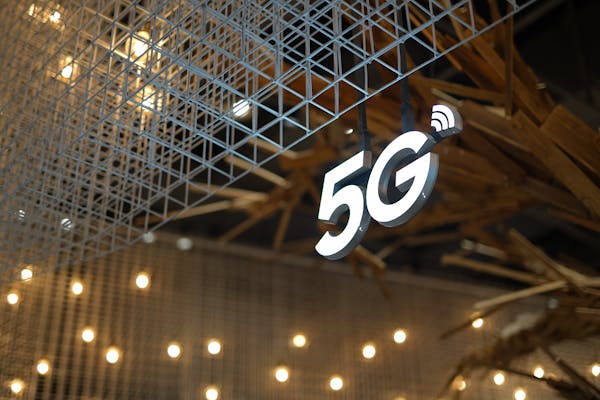
The advent of 5G technology marks a revolutionary leap in the realm of telecommunications, promising to reshape industries, enhance everyday life, and accelerate technological advancements. As the fifth generation of wireless technology, 5G offers unprecedented speed, low latency, and massive device connectivity, positioning it as a cornerstone of future digital infrastructure. This article delves into the multifaceted aspects of 5G technology, exploring its core features, potential applications, and the profound benefits of 5G technology across various sectors.
Understanding 5G Technology
The Evolution of Wireless Networks
To fully grasp the significance of 5G, it’s essential to understand the evolution of wireless networks. The journey began with 1G, which provided basic analog voice services. This was followed by 2G, which introduced digital voice and SMS capabilities. The leap to 3G brought mobile internet access, while 4G LTE enabled faster data speeds and supported high-definition video streaming and mobile applications.
5G represents a paradigm shift from these previous generations. It isn’t just an incremental upgrade but a comprehensive overhaul of wireless communication capabilities. The three key components that define 5G are:
- Enhanced Mobile Broadband (eMBB): This aspect focuses on providing faster data speeds and increased capacity. With theoretical download speeds reaching up to 10 Gbps, 5G can support bandwidth-intensive applications like 4K/8K video streaming, virtual reality (VR), and augmented reality (AR).
- Ultra-Reliable Low Latency Communications (URLLC): URLLC is crucial for applications that require real-time responses. It reduces latency to as low as 1 millisecond, enabling critical applications like remote surgery, autonomous vehicles, and industrial automation.
- Massive Machine-Type Communications (mMTC): 5G supports the connection of billions of devices, facilitating the growth of the Internet of Things (IoT). This feature is essential for smart cities, connected homes, and various IoT applications.
The Core Benefits of 5G Technology
1. Unprecedented Speed and Capacity
One of the most celebrated benefits of 5G technology is its incredible speed. While 4G networks can achieve peak speeds of around 1 Gbps, 5G can theoretically reach speeds of up to 10 Gbps. This drastic increase in speed not only enhances the user experience by reducing download and upload times but also supports the seamless functioning of high-bandwidth applications.
For instance, downloading a high-definition movie on a 4G network might take several minutes, but with 5G, it could be done in mere seconds. This speed advantage extends beyond consumer entertainment; it is vital for industries that rely on real-time data processing and large-scale data transfers.
2. Reduced Latency
Latency refers to the time it takes for data to travel from one point to another. In the context of 5G, latency can be as low as 1 millisecond, compared to 30-50 milliseconds in 4G. This near-instantaneous response time is a game-changer for applications that require real-time interaction.
For example, in remote surgery, low latency is crucial to ensure that surgeons can perform procedures with precision and without delay. Similarly, autonomous vehicles rely on low-latency communication to process information from sensors and make split-second decisions. The benefits of 5G technology in reducing latency extend to various sectors, including gaming, where players demand real-time responsiveness, and in industrial automation, where machines need to communicate instantaneously.
3. Massive Device Connectivity
5G’s capability to connect a massive number of devices simultaneously is a cornerstone for the expansion of IoT. With mMTC, 5G can support up to one million devices per square kilometer, compared to just 100,000 devices in 4G. This scalability is essential for the proliferation of smart devices in homes, cities, and industries.
In smart cities, for instance, thousands of sensors and devices need to communicate efficiently to manage resources, monitor environmental conditions, and enhance public services. The benefits of 5G technology in this context include improved traffic management through connected traffic lights, enhanced public safety with real-time surveillance, and better resource management in utilities like water and electricity.
4. Enhanced Reliability and Security
5G networks are designed with robust security measures, making them more resilient to cyber threats. The architecture of 5G allows for network slicing, which means creating multiple virtual networks on a single physical infrastructure. This feature enables tailored security protocols for different applications, ensuring that sensitive data is adequately protected.
Moreover, the reliability of 5G networks is enhanced through features like beamforming and massive MIMO (Multiple Input Multiple Output). Beamforming directs signals to specific devices, reducing interference and improving signal strength. Massive MIMO uses multiple antennas to increase capacity and reliability. These features are particularly beneficial in dense urban environments where signal interference is common.
5. Economic Growth and Innovation
The benefits of 5G technology extend to the broader economy by driving innovation and creating new business opportunities. The deployment of 5G is expected to contribute significantly to global GDP, creating jobs and fostering new industries. For instance, the development of smart manufacturing, autonomous vehicles, and telemedicine relies heavily on the capabilities of 5G.
The technology also enables new business models, such as edge computing and network as a service (NaaS). Edge computing brings data processing closer to the source of data generation, reducing latency and improving efficiency. NaaS allows businesses to lease network infrastructure and services, providing flexibility and cost savings.
Key Applications of 5G Technology
1. Healthcare
The healthcare industry stands to gain immensely from the benefits of 5G technology. One of the most promising applications is in telemedicine, where 5G’s low latency and high reliability enable real-time consultations and remote surgeries. Surgeons can operate robotic instruments from a different location, providing medical services to remote and underserved areas.
Additionally, 5G facilitates the use of wearable medical devices that can monitor patients’ vital signs in real-time. These devices can transmit data to healthcare providers, allowing for continuous monitoring and early detection of health issues. This capability is particularly valuable for managing chronic conditions and elderly care.
2. Autonomous Vehicles
The development of autonomous vehicles is heavily reliant on the benefits of 5G technology, particularly its low latency and high data throughput. Autonomous vehicles require real-time data from multiple sources, including sensors, cameras, and other vehicles. 5G enables these vehicles to communicate with each other and with infrastructure, such as traffic lights and road signs, in real-time.
This real-time communication is crucial for the safe and efficient operation of autonomous vehicles. It allows for quick decision-making and coordination, reducing the risk of accidents and improving traffic flow. Furthermore, 5G supports over-the-air updates, ensuring that vehicles can receive the latest software and safety updates without delay.
3. Smart Cities
Smart cities are a testament to the benefits of 5G technology, leveraging its capabilities to improve urban living. 5G supports the deployment of a vast number of sensors and devices that can monitor and manage city infrastructure. For example, smart traffic management systems can use real-time data to optimize traffic flow, reduce congestion, and lower emissions.
Public safety is another critical area where 5G can make a difference. High-definition surveillance cameras, combined with AI-powered analytics, can enhance security by detecting and responding to incidents more effectively. Moreover, 5G can support the deployment of smart streetlights, which can adjust brightness based on pedestrian and vehicle activity, improving energy efficiency and public safety.
4. Industry 4.0
Industry 4.0, also known as the fourth industrial revolution, is characterized by the integration of digital technologies into manufacturing processes. The benefits of 5G technology are central to this transformation, enabling smart factories that use IoT devices, robotics, and AI to optimize production.
In a smart factory, 5G can facilitate real-time monitoring and control of machinery, predictive maintenance, and automated quality control. The low latency and high reliability of 5G ensure that these processes are efficient and accurate. For example, robots on an assembly line can communicate with each other and with central control systems in real time, allowing for dynamic adjustments to production.
5. Entertainment and Media
The entertainment and media industry is set to benefit greatly from the benefits of 5G technology. The increased bandwidth and low latency of 5G make it possible to deliver high-quality content, such as 4K and 8K video, VR, and AR experiences, to consumers. This capability opens up new opportunities for immersive content and interactive media.
For example, live sports broadcasts can be enhanced with real-time data overlays and multiple camera angles, providing viewers with a more engaging experience. VR and AR applications can offer new forms of storytelling and interactive experiences, transforming the way content is consumed.
Challenges and Considerations
While the benefits of 5G technology are vast, there are also challenges and considerations to address. One of the primary challenges is the deployment of the necessary infrastructure. 5G requires a dense network of small cells, antennas, and fiber optic cables, which can be costly and time-consuming to install. Regulatory hurdles and concerns about radiation and health effects also need to be addressed.
Another consideration is the digital divide. As 5G technology becomes more widespread, there is a risk that rural and underserved areas may be left behind due to the high cost of infrastructure deployment. Ensuring equitable access to 5G is crucial for maximizing its benefits across all communities.
Security and privacy concerns are also paramount. With the increased connectivity and data generated by 5G networks, there is a greater risk of cyberattacks and data breaches. Robust security measures and regulations are necessary to protect sensitive information and ensure the safe use of 5G technology.
The Future of 5G Technology
As 5G technology continues to evolve, it is expected to become the backbone of future digital ecosystems. The development of 5G standards and the ongoing rollout of infrastructure will pave the way for new applications and innovations. From smart cities and autonomous vehicles to immersive entertainment and advanced healthcare, the benefits of 5G technology are poised to transform every aspect of society.
In the coming years, we can expect to see the further integration of 5G with emerging technologies such as AI, blockchain, and edge computing. These technologies will complement 5G, enhancing its capabilities and enabling new use cases. For example, AI can be used to optimize network performance, while blockchain can enhance security and trust in 5G applications.
Moreover, the evolution toward 6G and beyond is already underway. While still in the early stages of research and development, 6G promises even higher speeds, lower latency, and more advanced applications. As we move into this new era of connectivity, the foundational benefits of 5G technology will continue to play a critical role in shaping the future.
Conclusion
The advent of 5G technology represents a significant leap forward in wireless communication, offering unparalleled speed, low latency, and massive connectivity. The benefits of 5G technology extend across various sectors, from healthcare and autonomous vehicles to smart cities and entertainment. As 5G continues to evolve and become more widespread, it is set to transform industries, drive economic growth, and enhance everyday life.
However, realizing the full potential of 5G requires addressing challenges related to infrastructure deployment, digital equity, and security. As we navigate these challenges and embrace the opportunities presented by 5G, we stand on the cusp of a new era of innovation and connectivity that will reshape our world in profound ways.



